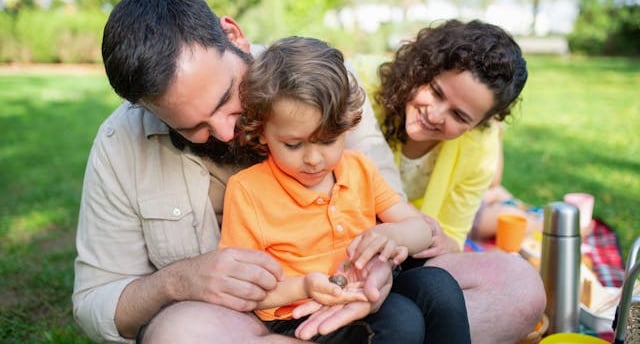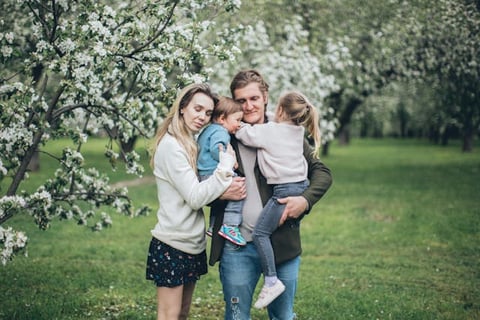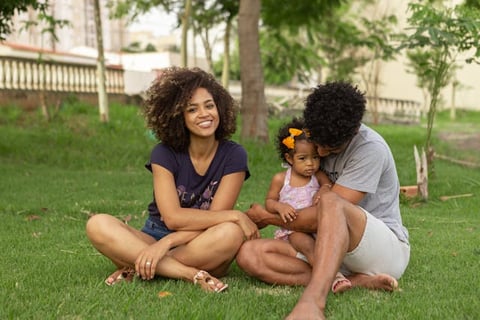Education, Awareness and Understanding Child Abuse
Child abuse is a pervasive issue that transcends borders, cultures, and socioeconomic statuses. Its impact on children is profound, leading to long-term psychological, emotional, and physical consequences. As parents and caregivers, the responsibility to shield children from such harm is paramount. Education and awareness are the cornerstones of effective prevention. By recognizing the signs of abuse and understanding the tactics employed by perpetrators, especially pedophiles and their networks, parents can create a protective environment for their children.
EDUCATION AND AWARENESS
Steve McNair
12/28/20243 min read


Child abuse is a global issue that cuts across each and every continent, every culture, and all socioeconomic levels. Its effects on children are grave, bringing long-term psychological, emotional, and physical ramifications. As parents and caregivers, we have the utmost responsibility to protect children from harm of this nature. Smart, preventative pandemic response begins with education and awareness. Parents can help ensure their children are protected by recognizing the signs of abuse and understanding what tactics perpetrators — particularly pedophiles and their networks — employ.
### Understanding Child Abuse
Child abuse can be caused physically, emotionally, sexually, or through negligence. In particular, sexual abuse consists of drawing the child into sexual activity, often by coercion, manipulation, or deceit. Pedophiles may act alone or as part of organized networks, using advanced methods to exploit children.
### Signs That May Indicate Abuse
Highlighting abuse early on, to be able to intervene and support. Signs can be different, but some of the most common signs are:
- Changes in Behavior: Social withdrawal, unusual behavior, or regression to earlier developmental milestones.
The Role of Education and Awareness
Empowering parents with knowledge is a formidable defense against child abuse. Workshops and training programs offer valuable insights into prevention and recognition.
Here are some organizations that provide such resources:
Sunflower House
Shawnee, KS
Offers training programs to adults and children to increase awareness of abuse and how to prevent or report it.
SUNFLOWER HOUSE
Pat’s Place Child Advocacy Center
Charlotte, NC
Provides online training about recognizing and responding to child abuse, designed for parents, youth-serving organizations, and professionals working with children.
PAT'S PLACE CAFÉ
Connect to Protect Kids
Chapel Hill, NC
Develops adult- and child-focused programs to educate all stakeholders, including youth, parents, and adults, with consistent messaging on child abuse prevention.
CONNECT TO PROTECT KIDS
Zero Abuse Project
St. Paul, MN
Offers training that teaches participants how to listen to children who have experienced maltreatment and gather the correct information needed in a way that puts the child’s needs first.
ZERO ABUSE PROJECT
RAINN (Rape, Abuse & Incest National Network)
Washington, D.C.
Provides resources and support for parents to talk to their children about online predators and offers safety tips to protect children online.
RAINN
How to Protect Children Strategies
Open Communication: Develop an open, trusting relationship in which children are comfortable sharing their experiences and concerns.
Educate About Boundaries: Teach children what boundaries are and how it is okay to say 'no' to anything they are uncomfortable with.
Monitor Online Activity: If you have children, be vigilant about their commercial Internet use. Use parental controls, and teach them about the dangers of talking to strangers online.
FOCUS ON THE FAMILY
Learn About Their Social Circles: Know who your child spends time with, whether adults or peers, and whether you know them in person or only online.
Encourage Reporting: Let children know they can report inappropriate behavior without fear of retribution.
Grooming Tactics Explained
Grooming tactics pedophiles use to manipulate and gain the trust of their victims. Knowing these behaviors can help intervene early:
Befriending the Family: Predators might want to get close with the child’s family to gain access.
Importance of Gift Giving: Proposing gifts or special favors to the child to create a sense of duty.
Isolation: Pressuring the child to be alone with them and away from anyone else.
Keeping Secrets: Persuading the child to keep their involvement or specific activities secret.
Sensitization: Slowly introducing the child to inappropriate material or touching.
Why You Should Know More – About Prevention
It is our collective responsibility to protect children. Public awareness campaigns and community education are important tools for prevention. Advocating for more local workshops, child advocacy center support, and educational resources can galvanize communities in the fight against child abuse.
Actually the responsibility of keeping children safe lies heavily on the parents and guardians who should keep an eye out and stay proactive. Educating ourselves about abuse and actively identifying its manifestations, learning how abusers operate, and promoting open conversation can help create a protective web that makes abuse less likely to occur. We can also attend workshops and apply the resources we have to protect our children better. Keep in mind that the first step to prevention is knowledge, and every action matters in the battle against child abuse.
Written by Steve McNair




